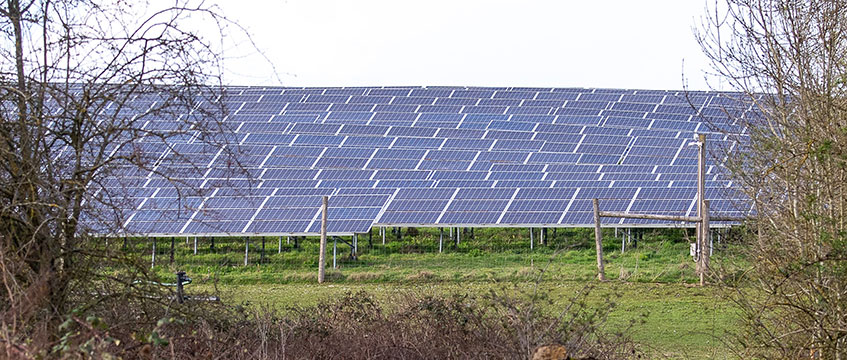In 2021, the government announced its intention to decarbonise the UK power system by 2035. It is an ambitious policy that addresses both climate change and the need to secure a domestic energy supply that reduces reliance on fossil fuels and the unpredictability of the global market and wider geopolitics.
Despite greenhouse gas emissions in the UK falling by 73% since 1990, 41% of the country’s electricity demand still relies on natural gas. Establishing large resources of clean electricity generation is therefore critical to achieving the bigger commitment to net zero by 2050.
Going solar
As the UK government moves to decarbonise the electricity system, solar power is fast emerging as the preferred land-based source of renewable energy generation.
The revised draft national policy statements were published on 30 March and confirm the 70GW by 2035 target set out in the British Energy Security Strategy. That sounds like a lot of solar panels, but the reality is that such levels of deployment would equate to less than 0.5% of land in the UK. According to the BBC, that is less than is currently occupied by golf courses.
Solar is not without its critics, though. Most notably, the Truss administration seemed to be against wide-ranging expansion, arguing that it would compromise the best use of agricultural land for food production. Consequently, as with any form of proposed development, and that includes agricultural uses, there will inevitably need to be a balance struck between public benefit and resulting harm.
The Department for Environment, Food and Rural Affairs has published the Environmental Improvement Plan 2023, committing to cleaner air and also to the preservation of our natural environment. The two priorities, while complementary in so many respects, can seem at odds in the context of land use for renewable energy development. In the consultation response to the government review of the electricity market, challenges such as land suitability and planning restrictions were cited.
A typical solar farm requires four acres per MW (roughly two football pitches), and that land is necessarily sited in areas with available grid capacity, which is usually the key factor in site selection. While the draft national policy statement on renewable energy nods towards the preference for solar development on brownfield land, it is noted that the specific features required for a solar farm to operate mean this is not always a realistic ambition.
In addition, brownfield land is already highly sought after for other, more lucrative, forms of development, most notably housing. In other words, the UK will simply not get anywhere near the level required unless it allows significant levels of solar development on greenfield agricultural land.
Assessing the real impact
However, in a world that favours polarised debate, the conclusion that agricultural land will be detrimentally affected by a push to bring forward solar farms is more nuanced.
Firstly, the agricultural value of the land is not permanently lost as a consequence. Solar panels will be removed at the end of their operational life (around 40 years) and the land can then return to agricultural use. Secondly, while the area covered by panels is large, the actual development footprint is small, owing to the majority of panels being placed on frames where only the legs are driven into the ground. Thirdly, agricultural land quality can actually improve during the life of a project through not being subject to intensive farming.
This is not to say that the solar industry should be given carte blanche to do what it likes wherever there is available capacity in the grid. Some proposals will undoubtedly be inappropriate for a whole host of reasons, be they related to landscape, visual, cultural heritage, ecological or other issues.
Alternative income streams
As far as agricultural land is concerned, planning policy does already direct developers towards lower-quality land where possible, but the choice between solar development or the use of land for food production is not necessarily binary. As will be familiar to viewers of Clarkson’s Farm, the ability for farms to diversify to create an alternative income stream is, for many farmers, the difference between sustaining wider food production and ceasing those activities altogether.
The first nationally significant solar projects in the UK (those with a capacity above 50MW) received their consents in 2021/22, but there are now a further 12 such applications in the system. If the UK is going to achieve its net zero targets, these projects will play a vital part.
Statistics show renewable energy is displacing gas and is increasingly the backbone of domestic energy production. In the absence of onshore wind, which, in England at least, the government seems to be avoiding, it will be solar and offshore wind that jump into the void and, in the process, doubtless cause more debate over where the appropriate balance in the planning system should be struck.
Paul Maile is a partner and Juliet Clark is a principal associate at Eversheds Sutherland











